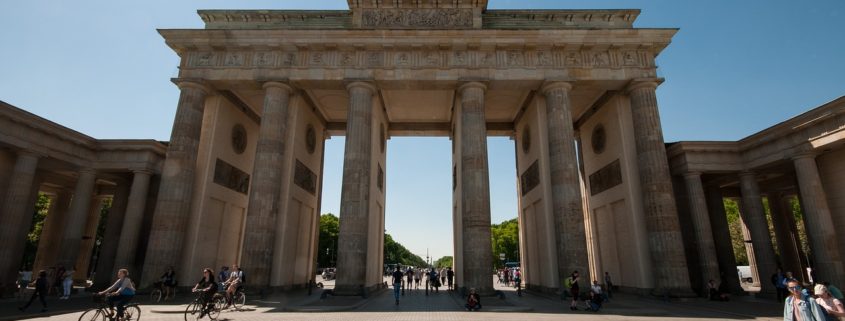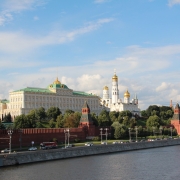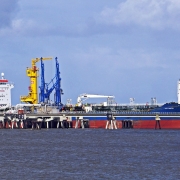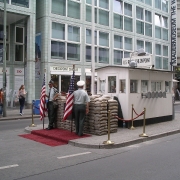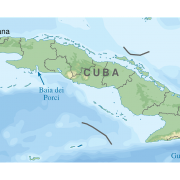What caused the end of the Cold War?
Why did the Cold War come to an end? In this three-part series, we have learnt how the Cold War began and how it expanded beyond Europe [as seen in the Korean War, Cuban Missile Crisis and Vietnam War]. Lastly, we will be looking at how the Cold War ended.
Topic of Study [For H2 and H1 History Students]: Paper 1: Understanding the Cold War (1945-1991) Section A: Source-based Case Study Theme I Chapter 3: End of Bipolarity
1. Economic collapse of the Soviet Union One of the leading arguments put forth by historians is that the Soviet Union was affected by a sluggish economy that hindered its efforts to keep up with the arms race aspect of the Cold War. From 1964 to 1982, Gorbachev’s predecessors had expended vast amounts of state funds and resources to achieve nuclear parity with USA. Given that military arms accumulation had negligible benefits to the economic prosperity of the country, its people had to bear the consequences, such as the fall in production of consumer goods and decline in living standards.
2. Ineffective economic, social and political reforms Under the leadership of Mikhail Gorbachev (1985-1991), the Soviet Union had undergone a drastic reform that affected its political, economic and social developments.
One such policy is Glasnost, which implies ‘openness’. This policy demonstrated Gorbachev’s willingness to accept new (and Western) ideas into the Soviet Union. Also, the people were allowed to state their views towards the government’s policies openly. However, this seemingly-democratic approach gave rise to unintended open criticisms that damaged the government’s credibility. For instance, the disastrous Chernobyl incident (Apr 1986) was exposed.
The second policy is Perestroika, which refers to ‘restructuring’. This approach involved the political and economic reforms that sought to blend both capitalist and central planning concepts into the domestic markets. For example, state enterprises were allowed to decide the level of production to meet consumer demand. At the same time, the government had full control over the means of production for these enterprises, thus restricting the latter’s ability to manage the cost of production. Eventually, the policy backfired. By early 1990s, Gross National Product (GNP) decreased by 2%. Many households suffered from food shortages as the country experienced high inflation rates and a devaluation of the Soviet Ruble against the US Dollar. Therefore, poor policy implementation contributed to the growing anti-government resentments that led up to the dissolution of the Soviet Union.3. The Sinatra Doctrine [Oct 1989] The aptly-named ‘Sinatra Doctrine‘ was a stark contrast to the Brezhnev Doctrine, as the former hinted at the notion that the Soviet government allowed more political autonomy to be granted to the satellite states (which formed the Warsaw Pact states). Initially, these satellites were ruled with an iron fist, as exemplified by the authoritarian responses to act on potential dissent and challenge to Moscow (e.g. end of the Hungarian Revolution in 1956).
On 7 December 1988, Gorbachev addressed the United Nations General Assembly. He supported the “principle of freedom of choice” by acknowledging it as a “universal principle to which there should be exceptions”. As a result, the satellite states interpreted Gorbachev’s statement as a clear indication that the Soviet Union would not intervene should they choose to form independent governments.
1989 was a significant year as the world witnessed a series of revolutions in Eastern Europe. The disintegration of the satellite states began in Poland, followed by other neighbouring countries, like Hungary, Bulgaria and Czechoslovakia. This process culminated in the fall of the Berlin Wall in 1989, which symbolised the reunification of Germany in 1990.4. Dissolution of the Soviet Union (Dec 1991) After observing the disintegration of the satellite states in Eastern Europe, many Soviet hardliners began to doubt Gorbachev’s intentions to address the challenges of the Soviet Union. Following the ineffective political and economic reforms of Glasnost and Perestroika, Gorbachev turned to a last-ditch effort to salvage the situation by proposing the Union Treaty that sought to create a voluntary federation in an increasingly democratised Soviet Union. However, Gorbachev was met with strong rejection by the hardliners. The country experienced a period of political instability.
During the attempted coup in August 1991, Gorbachev was placed under house arrest. Clearly, he had lost political influence. As such, Gorbachev resigned as the General Secretary and requested to dissolve all communist-related groups in the Soviet Union. Hence, Soviet Communism was no more. On 26 December 1991, the dissolution of the Soviet Union led to the creation of the Commonwealth of Independent States (CIS).
Therefore, the decline of the Soviet Union meant that the Cold War was no longer relevant.
What’s Next? Now that you have covered the entire spectrum of the Cold War study, it is important to take note of the following considerations to reinforce your learning of this theme: – How did USA contribute to the end of the Cold War? – Did Gorbachev play the most important role in causing the end of the Cold War? [class discussion]
The H2 and H1 History Tuition feature online discussion and writing practices to enhance your knowledge application skills. Get useful study notes and clarify your doubts on the subject with the tutor. You can also follow our Telegram Channel to get useful updates. We have other JC tuition classes, such as JC Math Tuition and JC Chemistry Tuition. For Secondary Tuition, we provide Secondary English Tuition, Secondary Math tuition, Secondary Chemistry Tuition, Social Studies Tuition, Geography, History Tuition and Secondary Economics Tuition. For Primary Tuition, we have Primary English, Math and Science Tuition. Call 9658 5789 to find out more.
